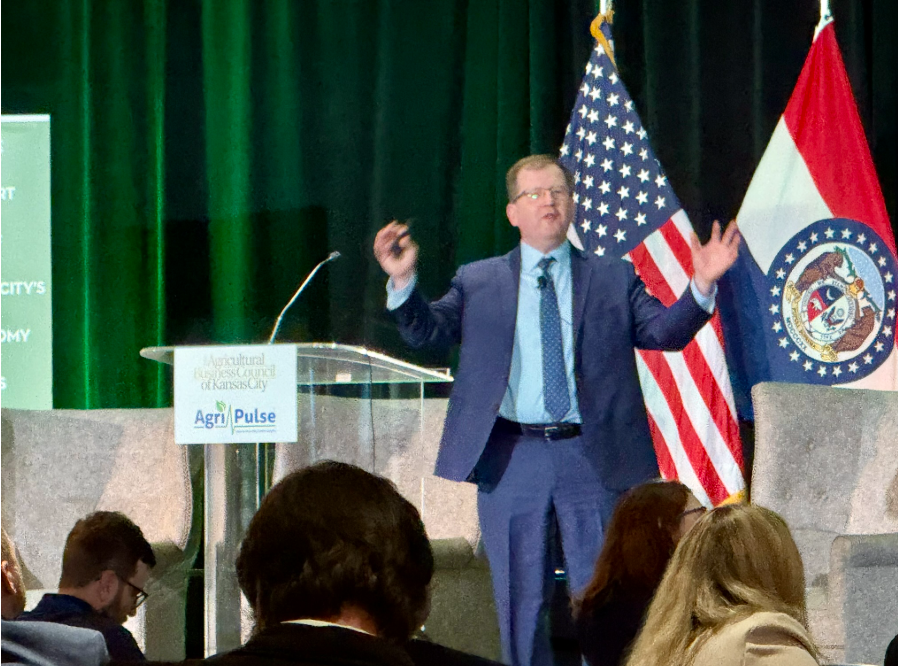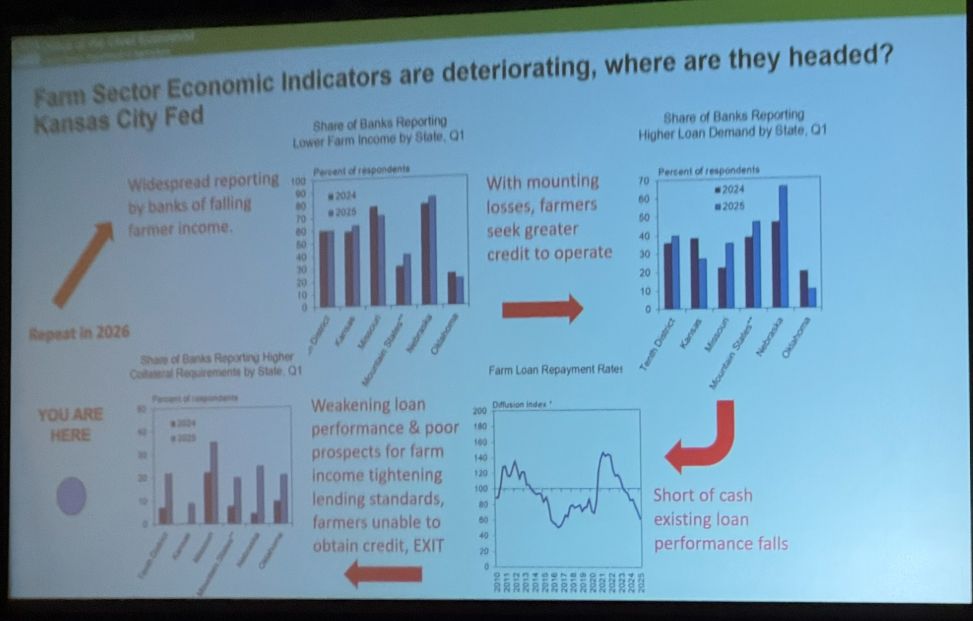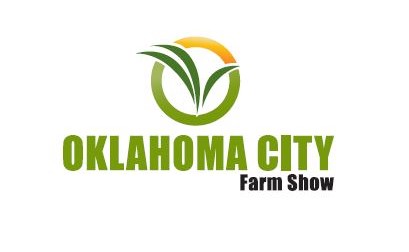
The U.S. agricultural sector is facing severe economic stress, masked by high aggregate numbers, with a profound disconnect emerging between the crop and livestock segments. Seth Meyer, USDA Chief Economist, emphasized this “tale of two sectors” at the Ag Outlook Forum, highlighting falling crop cash receipts, rising input costs, and a looming cash flow crisis that threatens farm solvency.
A Misleading Rise in Farm Income
Meyer cautioned against the overall U.S. farm income forecast, which is expected to “rise sharply in 2025,” because this number “gives the wrong impression” of the sector’s health.
- When direct government payments (economic assistance for previous years) and cattle receipts are subtracted, farm income is actually “coming down, not up.”
- Meyer stated that overall aggregate farm income is “not the number that tells you what’s going on” because it fails to capture the distinct differences between the crop and livestock sectors.
Crop Sector: Lowest Receipts Since 2007
The crop sector is under immense pressure, with crop cash receipts at their lowest level since 2007.
- Receipts are “consistently declining” across major commodities, including corn, soybeans, fruits and vegetables, and wheat, leading to “not great prospects on the crop side.”
- This decline is happening because “almost across the board you see falling prices.”
- Farmers have responded to potential difficulty in marketing soybeans by planting the “most corn planted since the 1930s,” which, despite lower risk, creates a “storage issue” due to the sheer volume difference compared to beans.
Livestock Sector: Carrying the Farm
In contrast, the animal agriculture sector is experiencing a period of strong profitability.
- Cattle prices are “very strong,” with the price forecast for 2025 reaching unexpected highs.
- This strength is “benefiting things like the hog market and broilers.”
- Meyer noted that “cattle are probably carrying the farm right now,” suggesting that without diversification into livestock, there would be “a lot of losses” in the overall farm operation.

The Price-Cost Squeeze and Negative Margins
The current financial stress is exacerbated by input costs that are defying historical patterns, leading to a rapid entry into a period of negative margins.
- Input Costs Rising: Input prices typically spike with commodity prices but then slowly decline as commodity prices fall. However, this is not the current pattern: “we’re not seeing the same moderation in those input prices as commodity prices turn sharply lower.”
- Fertilizer Prices: Despite some moderation from the high prices seen after Russia invaded Ukraine in 2022, the five-year average for fertilizer prices is “still talking about those prices being higher.”
- Negative Margins: Meyer presented Central Illinois corn budgets showing that the largest negative margins in the last 25 years are forecast for 2025 and 2026. He warned that this situation, which includes ad hoc disaster assistance, means farmers are “still eating up liquidity” built in previous years.
The Cash Flow Crisis and Policy Programs
The structure and timing of federal safety net payments, while providing an offset, are failing to address the immediate cash flow needs of producers.
- Delayed Payments: While commodity programs like ARC and PLC offer a “pretty good hedge” against falling prices, the payment for the current crop year doesn’t arrive until October of ’26. This means that while it is an “offset,” it’s an offset the farmer has to “make it to 2026” to receive.
- Borrowing Increases: This gap is creating financial strain, with banks “increasing their collateral necessary” and the “need for borrowing increasing year over year,” according to data from the Kansas City Federal Reserve.
- Base Acres and Future Relief: The payments are based on base acres—not planted acres—meaning that “if you don’t have base you don’t get that payment.” Furthermore, any rebalancing of base acres that would add more acres to the payment formula is not effective until the 2026 crop year, meaning the payment arrives in “October of ’27.”
Trade Turbulence and Shifting Market Signals
The trade environment is adding to market volatility and creating new logistical challenges.
- Absence of China: China’s current absence from the market is a “feature of why outstanding sales are lower,” and Meyer noted that “the Chinese are not buying.”
- Bargain Hunting: The overall U.S. soybean price is at a discount, but it is “not running that discount” that was required to move large volumes during previous trade friction years like 2018.
- Storage vs. Selling: Futures market signals are inconsistent across the country. Meyer noted that the Chicago market is signaling “sell the beans and store your corn,” but this “is not what it’s saying in other places in the country” due to localized basis differences and trade reorientation.
- Biofuels and Demand: Policy levers like biofuels are crucial for short- and medium-term demand. Meyer pointed out that the new RFS (Renewable Fuel Standard) gives domestic feedstocks double the compliance credit of imported feedstocks, and that biofuel exports were “record high last year.”
Meyer concluded that the current situation poses a critical question: is this a temporary cash flow issue that needs to be addressed immediately, or a multiple-year economic problem that requires a long-run injection and a strategy to deal with falling demand?

















